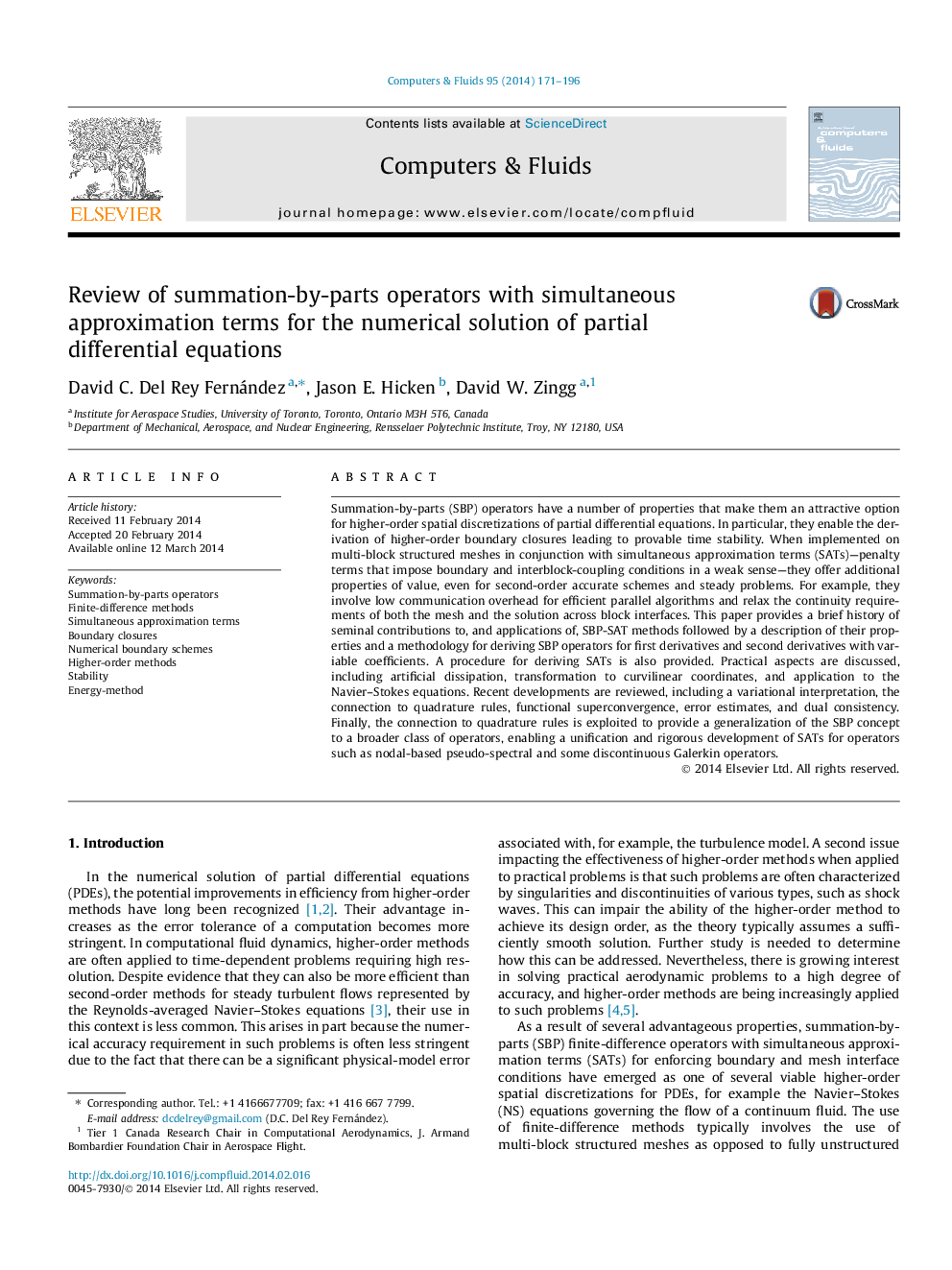| Article ID | Journal | Published Year | Pages | File Type |
|---|---|---|---|---|
| 768407 | Computers & Fluids | 2014 | 26 Pages |
•History of SBP operators and SATs, with a focus on the Navier–Stokes (NS) equations.•Methodology for deriving SBP operators for 1st and 2nd derivatives.•Implementation of SBP-SATs for the numerical solution of the NS equations.•Review of recent developments, including functional superconvergence.
Summation-by-parts (SBP) operators have a number of properties that make them an attractive option for higher-order spatial discretizations of partial differential equations. In particular, they enable the derivation of higher-order boundary closures leading to provable time stability. When implemented on multi-block structured meshes in conjunction with simultaneous approximation terms (SATs)—penalty terms that impose boundary and interblock-coupling conditions in a weak sense—they offer additional properties of value, even for second-order accurate schemes and steady problems. For example, they involve low communication overhead for efficient parallel algorithms and relax the continuity requirements of both the mesh and the solution across block interfaces. This paper provides a brief history of seminal contributions to, and applications of, SBP-SAT methods followed by a description of their properties and a methodology for deriving SBP operators for first derivatives and second derivatives with variable coefficients. A procedure for deriving SATs is also provided. Practical aspects are discussed, including artificial dissipation, transformation to curvilinear coordinates, and application to the Navier–Stokes equations. Recent developments are reviewed, including a variational interpretation, the connection to quadrature rules, functional superconvergence, error estimates, and dual consistency. Finally, the connection to quadrature rules is exploited to provide a generalization of the SBP concept to a broader class of operators, enabling a unification and rigorous development of SATs for operators such as nodal-based pseudo-spectral and some discontinuous Galerkin operators.
